Introduction
Have you ever wondered why your dog sits the moment you say “sit” or gets excited when they hear the jingle of their leash? Dogs learn through a fascinating mix of instincts, experiences, and repeated interactions with their environment. Understanding how they learn can transform the way you train, communicate, and bond with your furry companion.
In the world of canine behavior, two major learning processes play a key role: classical conditioning and operant conditioning. Classical conditioning is all about forming associations—your dog linking a sound, sight, or smell to an outcome. Operant conditioning, on the other hand, focuses on the consequences of behavior, using rewards and punishments to shape actions.
In this post, we’ll break down both methods, explore real-life examples of how dogs learn, and show you how combining these techniques can lead to more effective training and a stronger human-dog bond.
Understanding Dog Learning
Dogs constantly observe and interact with their environment, learning from every experience. Their brains are wired to notice patterns, associate actions with outcomes, and adapt their behavior accordingly. Understanding these learning processes is essential for training and shaping your dog’s behavior effectively.
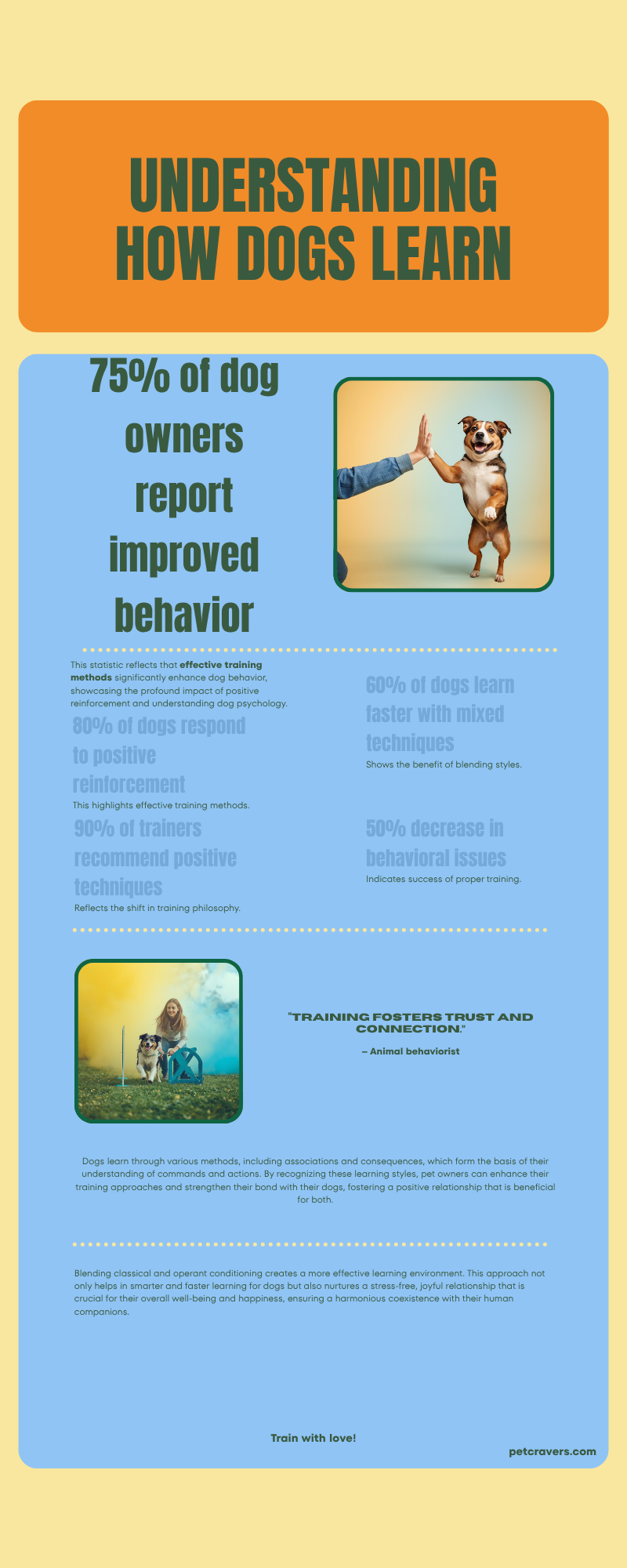
Learning in dogs can take many forms, from simple habit formation to complex problem-solving. It involves attention, memory, and repetition—skills that allow dogs to recognize cues, anticipate outcomes, and respond appropriately. By tapping into these natural learning abilities, owners can guide their dogs toward desired behaviors while minimizing frustration for both sides.
At the core of this learning are two fundamental methods: classical conditioning, where dogs form associations between stimuli, and operant conditioning, where they learn through the consequences of their actions. Together, these processes explain much of the behavior you see every day—from excited tail wags at the sound of a treat to obediently following commands during training sessions.
Classical Conditioning in Dogs
Classical conditioning is a type of learning where dogs form associations between two stimuli. In other words, they learn that one event predicts another, which can trigger automatic responses.
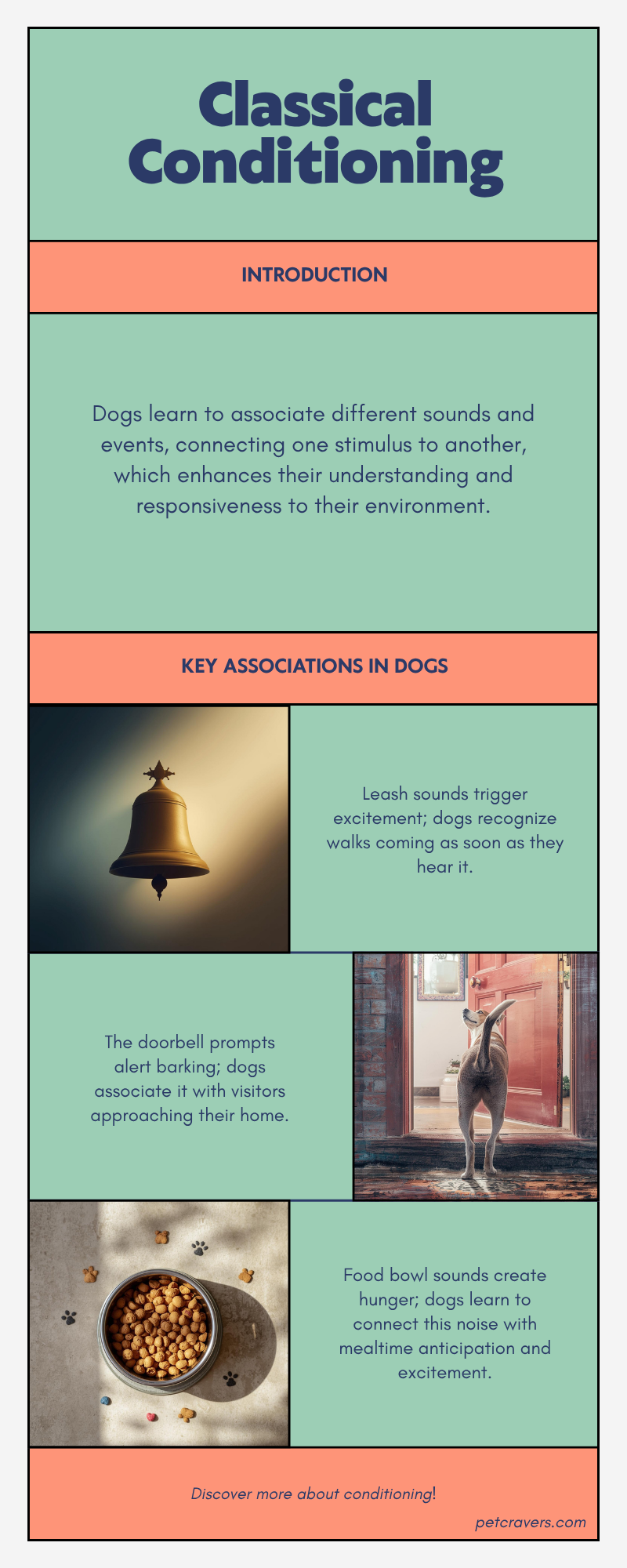
Famous Example: Pavlov’s Dogs
The most well-known example comes from Russian scientist Ivan Pavlov. He discovered that dogs could learn to associate the sound of a bell with food. Eventually, the dogs would start salivating just by hearing the bell—even when no food was present. This demonstrated that dogs can form strong connections between unrelated stimuli.
Everyday Examples in Dogs
- Hearing the leash → excitement because a walk is coming.
- Sound of the food bowl → salivating or running to the kitchen.
- Doorbell ringing → alertness or barking.
Emotional Responses
Classical conditioning often influences a dog’s emotional reactions. A dog may feel joy, anxiety, or anticipation depending on the association formed. For instance, repeated visits to the vet might make a dog anxious when they see the carrier, while treats paired with grooming can create a positive emotional response.
By understanding classical conditioning, dog owners can create positive associations and reduce negative reactions, laying the groundwork for effective behavior shaping.
Operant Conditioning in Dogs
Operant conditioning is a type of learning where dogs modify their behavior based on the consequences that follow their actions. Unlike classical conditioning, which is about association, operant conditioning focuses on cause and effect: behavior leads to a reward or punishment.
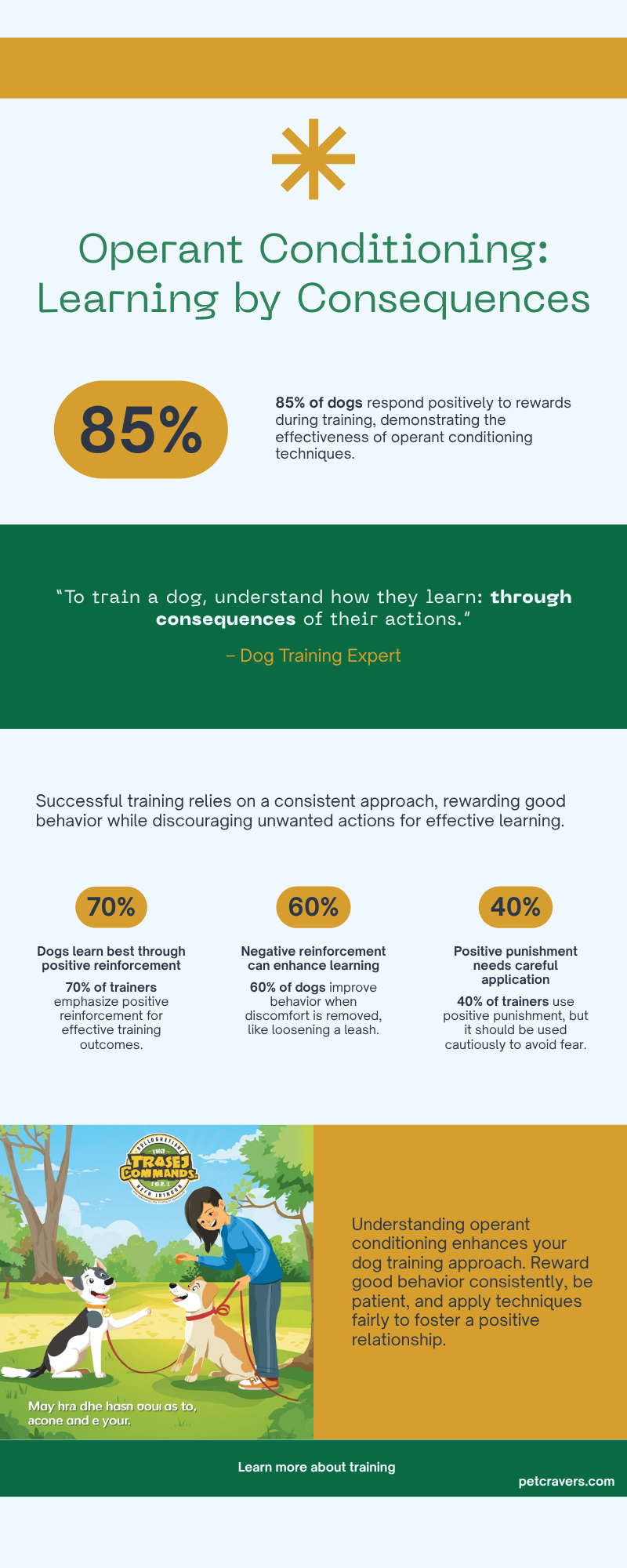
Types of Operant Conditioning
- Positive Reinforcement – Adding something pleasant to encourage behavior.
- Example: Giving a treat when your dog sits on command.
- Negative Reinforcement – Removing something unpleasant to encourage behavior.
- Example: Releasing leash tension when a dog stops pulling.
- Positive Punishment – Adding something unpleasant to reduce behavior.
- Example: Using a firm “no” when a dog jumps on guests.
- Negative Punishment – Removing something pleasant to reduce behavior.
- Example: Turning away and ignoring a dog that jumps to get attention.
Everyday Examples in Dog Training
- Teaching “sit,” “stay,” or “come” using treats and praise (positive reinforcement).
- Leash training to stop pulling (negative reinforcement or punishment).
- Discouraging destructive chewing by redirecting the dog and removing toys temporarily (negative punishment).
Operant conditioning is widely used in dog training because it helps dogs understand the consequences of their actions, allowing them to learn desired behaviors more effectively.
Classical vs. Operant Conditioning: Key Differences
While both classical and operant conditioning are essential for understanding dog behavior, they work in very different ways.
| Feature | Classical Conditioning | Operant Conditioning |
| Definition | Learning through association between two stimuli | Learning through consequences of behavior (rewards or punishments) |
| Focus | Emotional or automatic responses | Voluntary behaviors and actions |
| Example | Dog salivates when hearing the food bowl | Dog sits on command to receive a treat |
| Goal | Create associations that trigger predictable responses | Shape behavior by reinforcing or discouraging actions |
| Type of Response | Involuntary (salivation, excitement, fear) | Voluntary (sitting, coming, stopping a behavior) |
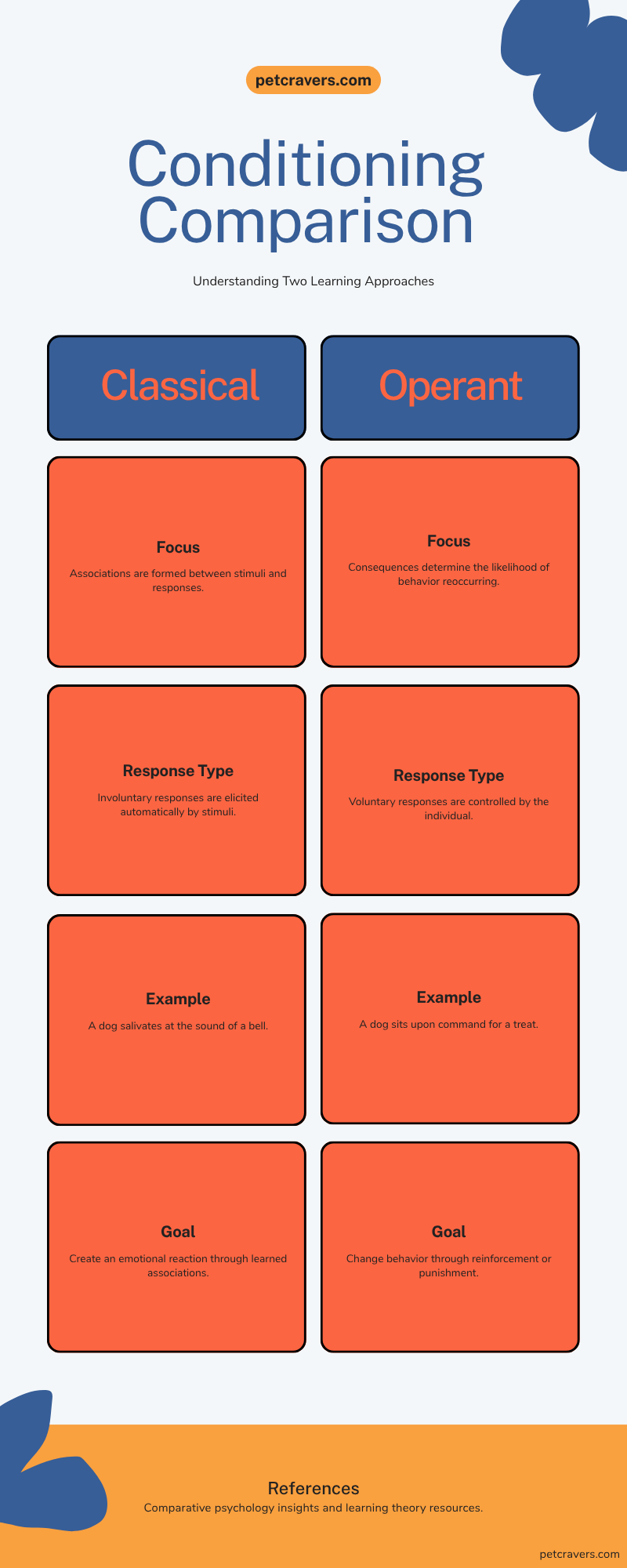
Everyday Comparison
- Classical: Your dog hears the doorbell and becomes alert because it predicts someone arriving.
- Operant: Your dog sits when you say “sit” because it receives a treat for doing so.
Understanding the differences helps trainers and owners know when to use association versus consequence, making training more effective and consistent.
Combining Both Methods in Dog Training
While classical and operant conditioning are different, the most effective dog training often combines both approaches. Using associations alongside consequences helps dogs learn faster and retain behaviors more reliably.

How Trainers Combine Them
- Cue + Reward: A dog hears a command (classical cue) and performs the behavior to earn a treat (operant reinforcement).
- Positive Associations with Training: Pairing grooming, vet visits, or new experiences with treats or praise makes dogs more comfortable, reducing fear or anxiety (classical conditioning) while encouraging desired behaviors (operant conditioning).
- Behavior Shaping: Trainers may first create a positive emotional association with an action, then reinforce it with rewards to strengthen the behavior.
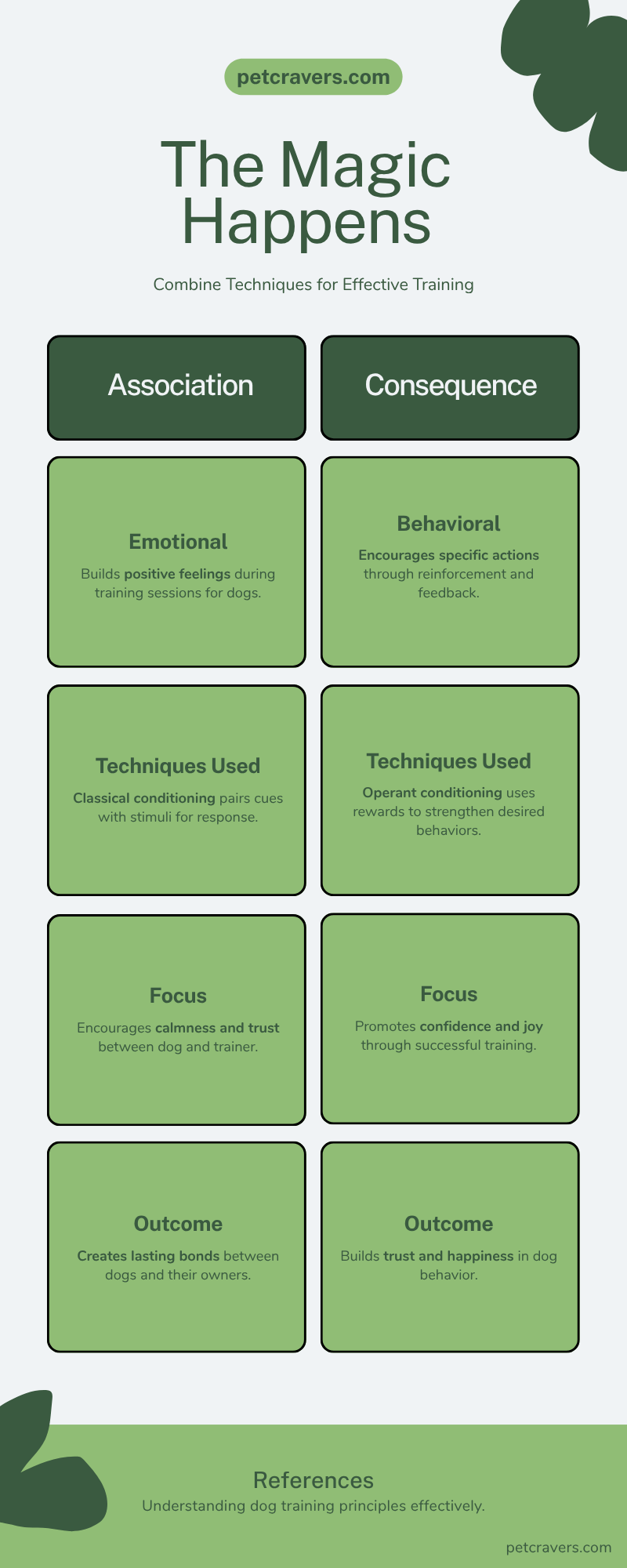
Benefits of Combining Approaches
- Builds stronger bonds between dog and owner.
- Encourages consistent, reliable behavior.
- Reduces stress and creates positive learning experiences.
- Makes complex training, like agility or obedience, easier and more enjoyable for the dog.
By understanding and applying both methods together, owners can train their dogs more effectively while fostering trust, confidence, and a happier relationship.
Practical Tips for Dog Owners
Applying the principles of classical and operant conditioning at home can make training more effective and enjoyable for both you and your dog.
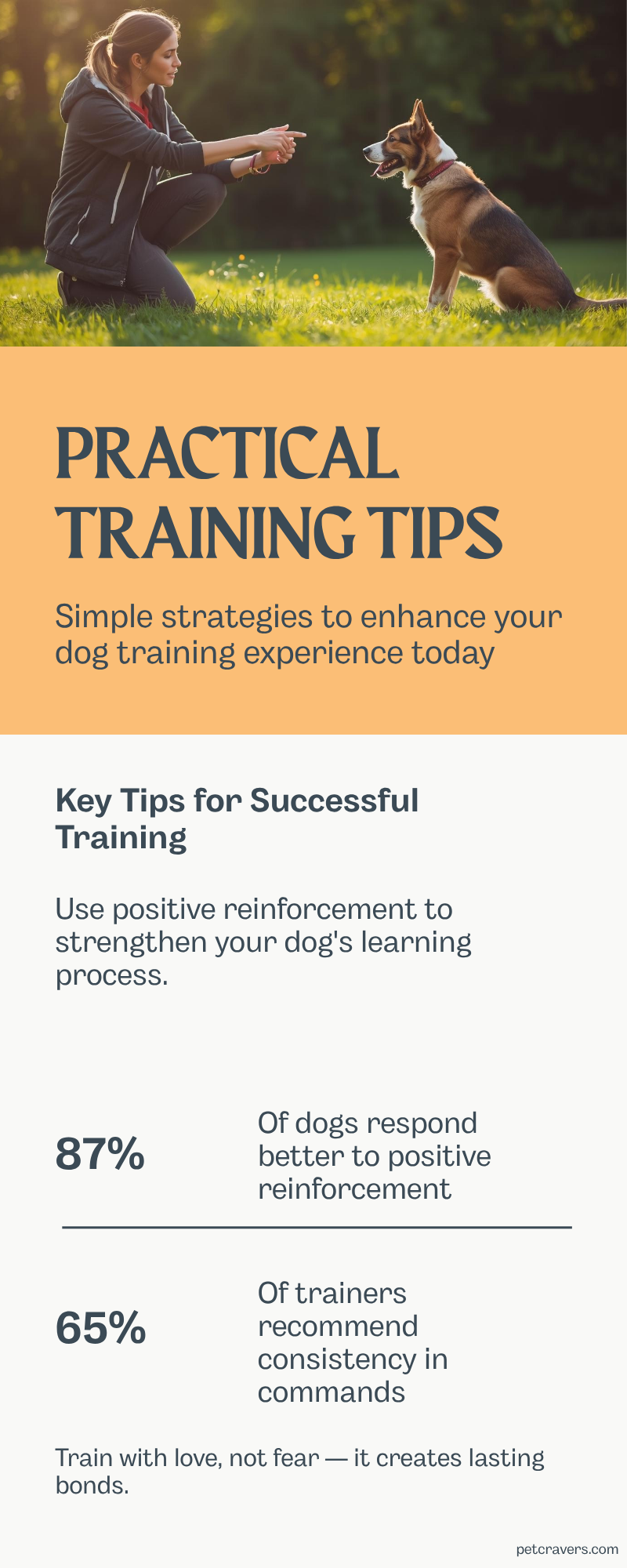
1. Use Clear Cues and Signals
Dogs respond best when commands and signals are consistent. Pair verbal cues or hand gestures (classical conditioning) with rewards or corrections (operant conditioning).
2. Reward Good Behavior Immediately
Timing is key. Reward your dog immediately after they perform a desired action so they associate the behavior with a positive outcome.
3. Avoid Overusing Punishment
While punishment can reduce unwanted behavior, overusing it may create fear or anxiety. Focus on reinforcing positive actions instead.
4. Create Positive Associations
Introduce new experiences—like vet visits, grooming, or meeting strangers—paired with treats, praise, or toys. This classical conditioning technique reduces fear and builds confidence.
5. Be Patient and Consistent
Learning takes time. Consistency in cues, rewards, and boundaries helps dogs understand expectations and retain training.
By combining these practical strategies with an understanding of classical and operant conditioning, dog owners can encourage desirable behavior, reduce stress, and strengthen the human-dog bond.
Conclusion
Dogs are remarkable learners, using both classical and operant conditioning to navigate the world around them. Classical conditioning allows them to form associations and develop emotional responses, while operant conditioning teaches them how their actions lead to rewards or consequences.
By understanding these two learning methods and knowing when to apply each, dog owners can train more effectively, build stronger bonds, and create a positive, stress-free environment for their pets. Combining cues, rewards, and consistent guidance ensures that training is not only successful but also enjoyable for both the dog and the owner.
Ultimately, understanding how dogs learn empowers owners to communicate better, guide behavior thoughtfully, and deepen the connection with their four-legged companions.
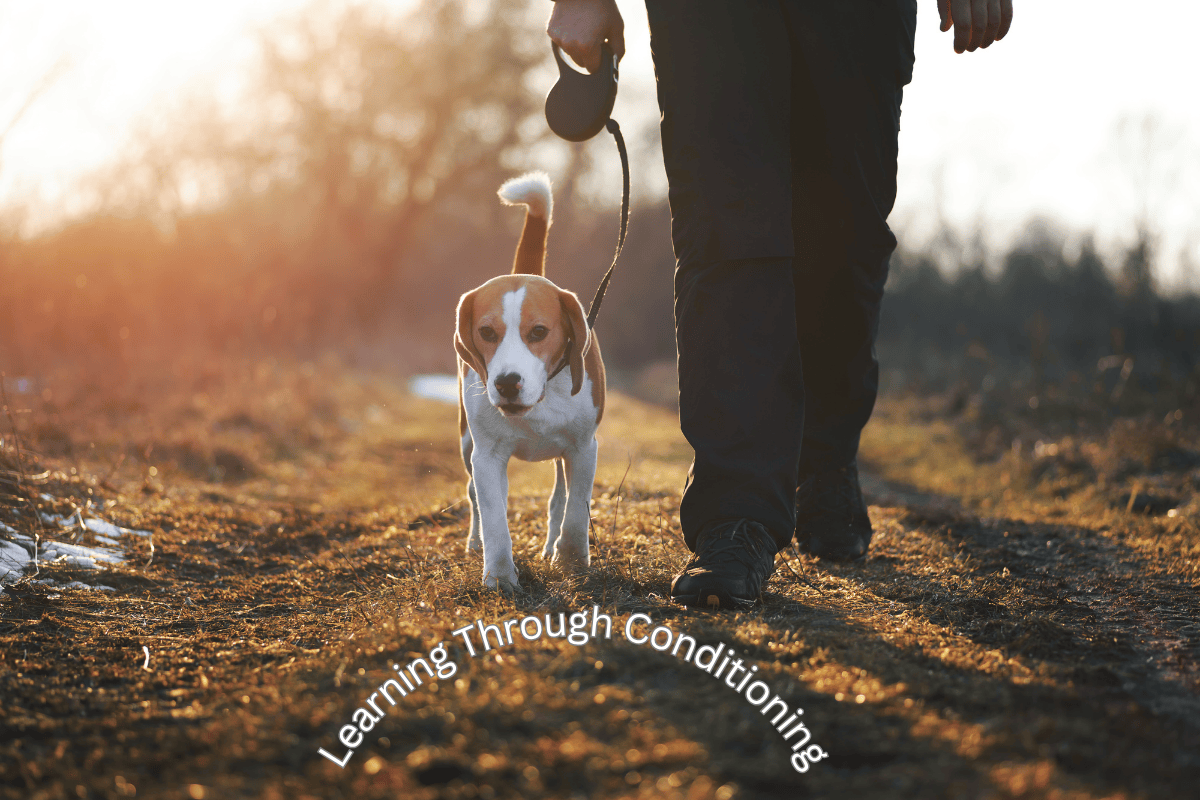

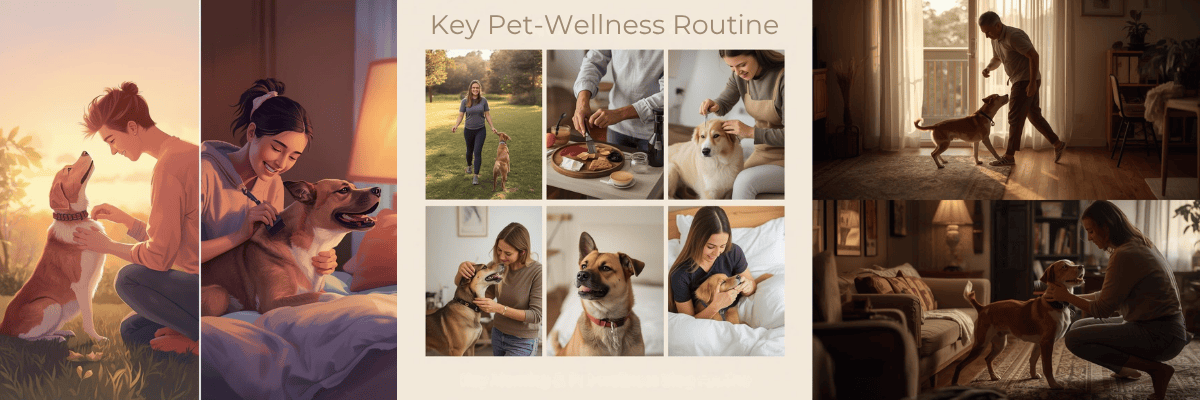

Leave a Reply